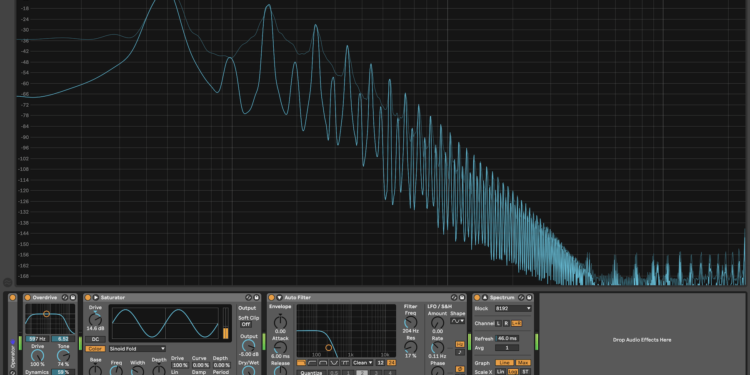Ableton Live is a powerful digital audio workstation (DAW) that offers a wide range of tools and features for music production. When it comes to creating bass sounds, Ableton Live provides various plugins and techniques to help you achieve the desired results. In this article, we will explore some useful tips and tricks to create compelling bass sounds in Ableton Live.
Selecting the Right Oscillator
The oscillator is the fundamental building block of any bass sound. Ableton Live offers a variety of oscillator types, such as sine, square, sawtooth, and triangle waves. Each waveform has its unique characteristics, and you can experiment with different combinations to find the perfect match for your bass sound.
Applying Filters and Envelopes
To shape your bass sound further, you can apply filters and envelopes. Filters allow you to remove unwanted frequencies and emphasize certain aspects of the sound. Ableton Live features various filter types, including low-pass, high-pass, band-pass, and notch filters. Experimenting with different filter settings can help you achieve the desired tonal qualities.
Envelopes, on the other hand, control how the sound evolves over time. The most commonly used envelope parameters include Attack, Decay, Sustain, and Release (ADSR). Adjusting these parameters can significantly impact the character and dynamics of your bass sound.
Layering Multiple Sounds
Layering multiple bass sounds can add depth and complexity to your compositions. Ableton Live allows you to stack multiple sound sources together, combining different oscillator waveforms, filters, and effects. Experiment with different layering techniques to create a unique and powerful bass sound.

Credit: blog.faderpro.com
Utilizing Effects and Modulation
Ableton Live provides a wide range of effects and modulation tools that can enhance your bass sound. Some popular effects for bass include distortion, overdrive, chorus, and reverb. Additionally, utilizing modulation effects like LFOs (Low-Frequency Oscillators) can bring movement and texture to your bass sound.
Working with MIDI Controllers
Ableton Live can be integrated with various MIDI controllers, allowing you to have hands-on control over your bass sounds. MIDI controllers offer tactile and expressive ways to manipulate parameters in real-time, enabling you to create dynamic and organic bass performances. Consider investing in a MIDI controller to take your bass sound creation to the next level.
Credit: www.mind-flux.com
Sound Design Resources
There are plenty of resources available online for learning more about sound design in Ableton Live. Websites, forums, tutorials, and YouTube channels dedicated to music production can provide valuable insights and ideas for creating unique bass sounds. Exploring these resources can help you stay updated with the latest techniques and trends in bass sound design.
Frequently Asked Questions For Creating Bass Sounds In Ableton Live: Mastering The Art
How To Create A Classic Bass Sound In Ableton Live?
To create a classic bass sound in Ableton Live, start with a simple waveform like a sine or sawtooth, add a low-pass filter, and adjust the envelope to give it punch and sustain.
What Are Some Essential Effects For Processing Bass Sounds?
Essential effects for bass processing in Ableton Live include EQ to boost or cut specific frequencies, compression to even out the volume, and saturation to add warmth and harmonics.
Why Is Proper Eq Important For Bass Sounds In Ableton Live?
Proper EQ is important for bass sounds in Ableton Live to ensure clarity and definition, remove muddiness, and tailor the sound to fit with other elements in the mix.
How Can Layering Enhance The Depth Of A Bass Sound?
Layering bass sounds in Ableton Live can enhance depth by combining different waveforms or samples, blending frequencies, and stacking different timbres to create a rich, full-bodied sound.
Conclusion
Creating captivating bass sounds in Ableton Live involves careful selection and manipulation of oscillators, filters, envelopes, effects, and modulation. By experimenting with different settings, layering techniques, and utilizing MIDI controllers, you can develop unique and impactful bass sounds that add depth and richness to your music productions. Remember to stay curious and continue learning to refine your skills in bass sound design.